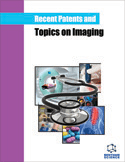Abstract
Objectives: To assess the safety and efficacy of tranarterial chemoembolization with doxorubicin-loaded beads for treatment of unresectable hepatocellular carcinoma (HCC).
Methods: From November 2012 till November 2013, 40 patients with unresectable HCC were selected for the treatment by transarterial chemoembolization with doxorubicin-loaded beads. Mean tumor size was 5.7 cm (range, 4.5-6.5 cm) classified as Child-Pough class A (n=10) and B (n=30). There were 34 patients received only one session of chemoembolization while 6 patients needed another additional session after one month of the procedure. Triphasic computed tomography and α-fetoprotein (AFP) levels were performed every 1, 3 and 6 months after the procedure.
Results: Regarding efficacy, an objective response according to the European Association for the study of the Liver criteria was observed in 100% after 1 and 3 months, 95% after 6 months. A complete response was observed in 85% after one month, in 100% after 3 months and 85% after 6 months. Partial response was observed in 15% after one month and progressive disease in 10% after 6 months. There was significant decrease in serum AFP level one month after treatment (68.84±88.33 ng/ml) compared to pre-treatment level (808.11±545.14 ng/ml) with (P-value < 0.001). There was significant decrease in serum AFP level three and six months after treatment (47.79±82.33 ng/ml) and (12.18±15.67ng/ml) respectively compared to pre-treatment level (808.11±545.14 ng/ml) with (P-value < 0.001). Mean tumor necrosis ranged from 91.3% to 98.6% across treatment.
Regarding safety liver function tests showed transient increase after one month then decreased after 3 and 6 months.
Procedure related complications were seen in 12.5% in the form of decompensation in 10% and a small high inguinal hematoma in 2.5%, Postembloization syndrome was observed in 65% of patients. The overall survival rate across the study was 95%.
Conclusion: Chemoembloization using doxorubicin-loaded beads is a safe and effective treatment of HCC as demonstrated by the low complication rate, good tumor response, sustained reduction of α-fetoprotein levels, and high overall survival rate.
Keywords: Chemoembolization, doxorubicin, drug-eluting beads, embolization, HCV, hepatocellular carcinoma.
 15
15

